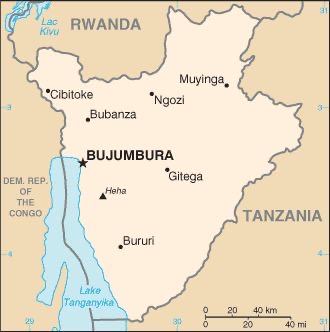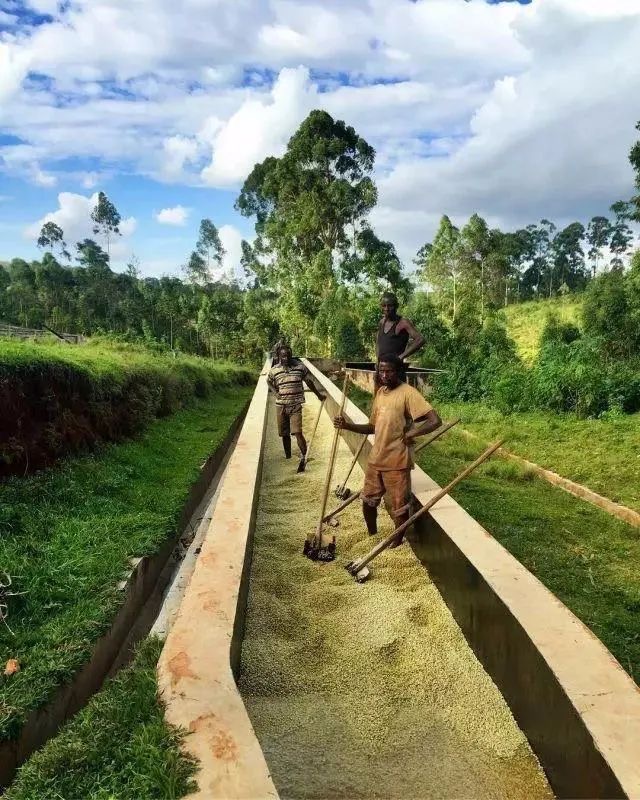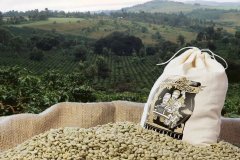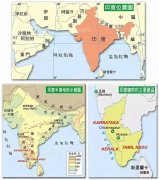Geographical location of East African Coffee in Burundi characteristics and defects of Burundian Coffee
Burundi is a small country, about the size of Maryland. Coffee-growing areas are concentrated in the northern centre of the country, extending northward from the centre of the country to the Rwandan border (including Kitga, Kaluzi, Kayanza, Kirundo, Muyinga and Ngozi provinces).

In the northern mountains of a small landlocked country, specialty coffee is becoming a source of hope and opportunity. Known for its high altitude, heavy rainfall and rich volcanic soil, the Ngozi region has been committed to realizing its potential since the coffee industry was privatized in 2009. The coffee comes from smallholder farms in northern Burundi: Ngozi and Cayanza provinces.
Burundi is unique. It's as if the mountains of this country are designed for miniature parcels. Burundi has a deep understanding of coffee, which is reflected in small processing stations in the mountains. The country's rich knowledge of coffee makes its coffee have a variety of flavors and characteristics.

Sometimes referred to as the African Alps, the remote mountains of Burundi are dotted with coffee fields in the backyard, with 250-600 coffee trees per farm. The entire growing community in Burundi is based on smallholder farmers. The farmers took the cherries to the laundry station not far from the farm. There are 13 wet treatment plants in the area, which can support more than 40,000 farmers.
Burundian Ngozi is a medium-bodied coffee with moderate acidity. After being fully washed, it has bright and lively flavors of orange peel and cranberry.
Some East African coffee, such as Burundian coffee, suffers from the strong taste of potato skins, rather than the ideal taste of coffee. The defect is said to be eventually caused by a pyrazine compound. The current popular theory is that coffee cherries will be damaged by insects, the most famous of which are several bedbugs. The connection between them is not entirely clear.
Important Notice :
前街咖啡 FrontStreet Coffee has moved to new addredd:
FrontStreet Coffee Address: 315,Donghua East Road,GuangZhou
Tel:020 38364473
- Prev

Coffee flavor and main processing methods of East African coffee in Tanzania
Tanzania coffee production region: most of the famous Tanzanian peach berry coffee, like most Tanzanian Arabica coffee, grows on Mount Meru and Kilimanjaro. Most of the Arabica coffee in Tanzania is produced in the Kilimanjaro region and the southern highlands. Some of the best coffee in Tanzania are Tanzania peach coffee and Tanzania Kilima
- Next

Flavor and taste of Indian coffee treated by monsoon
As early as the time of the British Oriental Trading Company, coffee and spices were transported from India to large wooden ships near the Cape of good Hope. The journey took months, and the coffee was exposed to moist air and wind, changing its characteristics. The coffee turns light golden, expands, loses acidity, and has an earthy taste. Europeans like this kind of coffee and are addicted to its taste. Sue
Related
- Beginners will see the "Coffee pull flower" guide!
- What is the difference between ice blog purified milk and ordinary milk coffee?
- Why is the Philippines the largest producer of crops in Liberia?
- For coffee extraction, should the fine powder be retained?
- How does extracted espresso fill pressed powder? How much strength does it take to press the powder?
- How to make jasmine cold extract coffee? Is the jasmine + latte good?
- Will this little toy really make the coffee taste better? How does Lily Drip affect coffee extraction?
- Will the action of slapping the filter cup also affect coffee extraction?
- What's the difference between powder-to-water ratio and powder-to-liquid ratio?
- What is the Ethiopian local species? What does it have to do with Heirloom native species?

